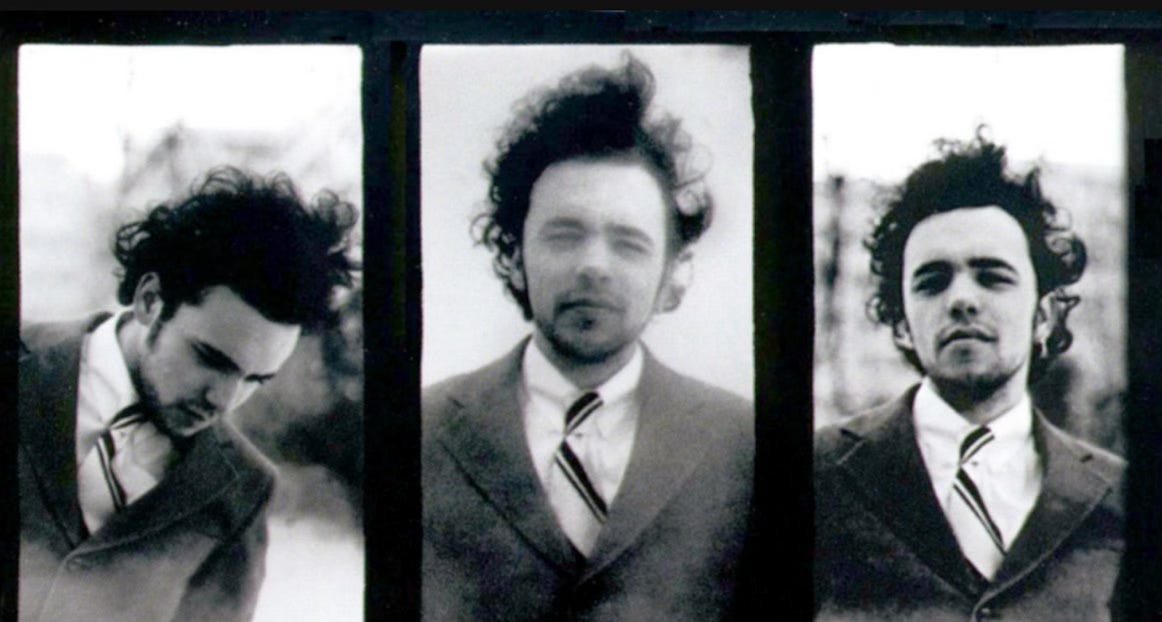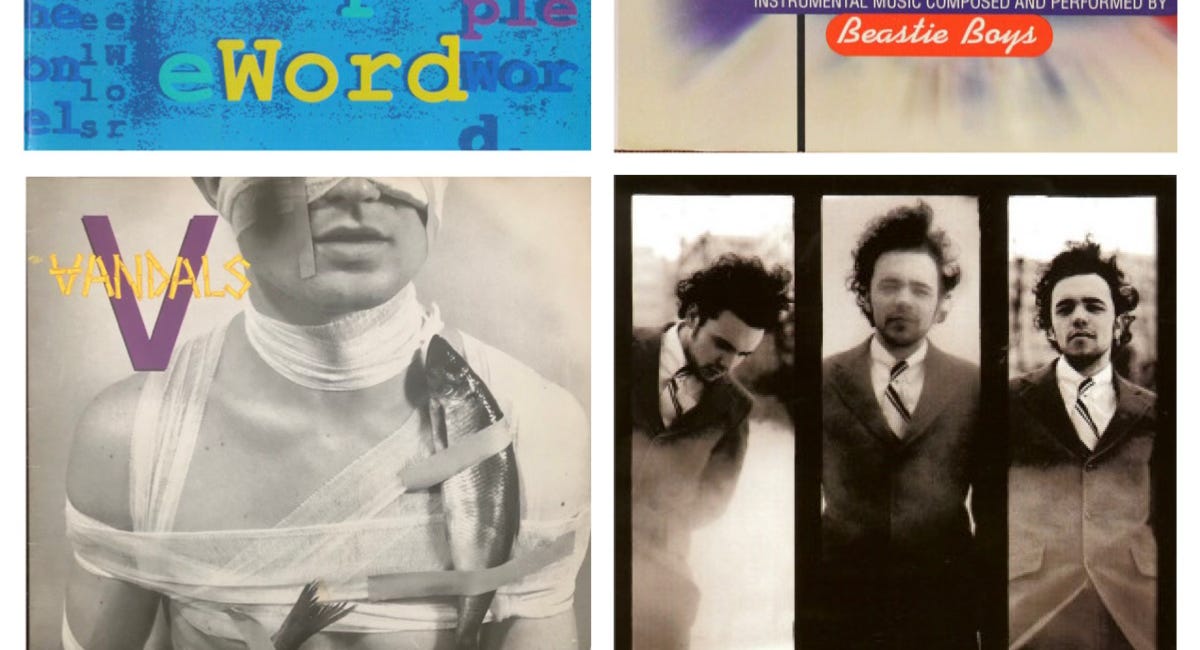Hawksley Workman | History of the Band
Inside the myth, music, and madness of a DIY icon who made being different his superpower.
In the late '90s, as grunge fatigue set in and indie rock began fracturing into fascinating shapes, Hawksley Workman emerged not just as a performer, but as a full-blown persona. Born Ryan Corrigan in 1975 in the small Ontario community of Bay Lake, he was raised by a Bell Canada technician dad (and part-time drummer) and a mother, Beverley Hawksley, who was equal parts artist and inspiration. By age 12, Corrigan knew he was going to be a musician. Teachers noted he was “different,” not as a warning, but as a promise.
Toronto called in the mid-'90s, and Ryan answered, reinvented as Hawksley Workman, a name cobbled from his maternal grandfather and grandmother’s surnames. There, he chased his muse into after-hours jams, late-night couch naps in a Keele Street studio foyer, and eventually into his own DIY basement studio, dubbed Hawksleytown. On a borrowed Tascam ½-inch 8-track and surrounded by relics of a deceased grandmother’s past, he taught himself the art of full-scale production, starting each track with a live drum take, then layering guitars, bass, and keys like a sonic patchwork quilt.
Kyle Bittner suggested this artist for a future Dig Me Out podcastepisode. Each month, our Paid Subscribers are presented with a selection of albums suggested by listeners and asked to vote for their favorite.
He was prolific, raw, and deeply in tune with his own musical whims. “I was just beginning to find my voice,” he later reflected, after recording the track “I Can Be A Rock.” That voice would soon turn heads.
Musical Style and Evolution in the ’90s
Hawksley Workman didn’t fit into any one box. That was the point. His music, part yodel, part glam cry, part lounge act from another planet, felt like channeling Bowie, Tom Waits, and Bruce Cockburn through a VHS copy of a forgotten cabaret musical.
He crooned. He howled. He whispered secrets and sang about sex, sadness, and surreal slices of life. In “Maniacs,” the opening track to For Him and the Girls, he opened with a yodel, followed by a chant, and ended in a glam-rock scream. It was daring, disorienting, and kind of magical.
Across the late '90s, Workman’s output reflected a deep embrace of contradiction: slinky funk one moment, dusty vaudeville the next. And he made nearly all of it himself, playing drums, guitars, bass, keys. Horns and clarinets added unexpected color, while lo-fi synths anchored tracks in a playful electronic haze. Critics struggled to label him. Fans just knew: Hawksley Workman was doing something nobody else dared.
His 1998 album Before We Were Security Guards (released widely only in 2004) was rough but rich, homegrown tapes filled with strange humor, earnest lust, and fearless creativity. His 1999 debut proper, For Him and the Girls, was more ambitious and more focused, yet no less whimsical. There was a confidence now, a theatrical grip on what it meant to be both romantic and weird.
Discography and Notable ’90s Releases
Before We Were Security Guards (1998): A lo-fi gem recorded on borrowed gear in Hawksleytown. Initially sold only as CD-Rs at gigs. Tracks like “My Delicious Chocolate Cake” and “Your Naked Body on the Beach” reveal a raw, joyous voice in bloom.
For Him and the Girls (1999): Recorded solo on analog gear in a basement, this debut turned Workman into a cult figure. Released on his own Isadora Records (named after a fictional muse), the album featured brass, clarinet, and a suite of self-played instruments. Highlights: “No Sissies,” “Maniacs,” “Paper Shoes.” It nearly vanished when the master DAT got mangled, but was rescued in time. It sounded like nothing else on the shelves.
Bird – Chrome Reflection (2000): A side-project with Jason Collett and Andrew Cash, showcasing Workman’s collaborative spirit and his role as a connector in the Canadian indie scene.
Canadian critics quickly caught on. Exclaim! called him “eccentric” but “promising,” and praised his blend of Rheostatics-like oddity with Rufus Wainwright’s operatic flair. Mojo said he was “staggeringly impressive.” Time Out London called him “the coolest thing to come out of Canada.” Not bad for a guy still mixing his records in a basement.
Listeners were even more devout. Word-of-mouth spread through early internet forums and Amazon reviews, praising his “remarkable melodies” and “beautiful lyrics.” Fans embraced the quirks: the genre-bending, the dramatics, the sense that every track could be your new favorite, or your weirdest yet.
Influence and Legacy of the ’90s Era
Before there was Arcade Fire’s orchestral bombast or Broken Social Scene’s experimental heart, there was Hawksley Workman, building mythologies and mastering the art of being hard to pin down.
His early DIY ethic, self-recording, self-releasing, self-mythologizing, laid a blueprint that others followed. He showed that a Canadian artist could be glam, goofy, genre-defying, and still win critical love and cult devotion. He mentored others, including Serena Ryder, and opened doors through his label and collaborations.
He also gave permission: to be odd, to be theatrical, to write fake bios and love letters to fictional muses. It wasn’t deception. It was storytelling. And in a scene that often prized slacker authenticity, Workman made performance cool again.
In a decade teeming with guitar feedback and quiet-loud-quiet formulas, Hawksley Workman dared to yodel. He conjured music from a Toronto basement and turned it into a traveling cabaret of emotion and drama. He was sui generis, a category unto himself.
Even now, his 1990s output feels like a secret passed between music lovers. If you know, you know. And if you don’t, you’re in for something wild, romantic, and unforgettable.
Hawksley Workman didn’t just make music in the ’90s. He made magic. And that, more than anything, is why his legacy endures.
90s Rock Tournament | Vote
Each month, listeners nominate the under-the-radar 90s rock albums that still echo in their heads. Records that meant something then and deserve another listen. This round features four listener picks, each with its own story, sound, and slice of the ‘90s.




